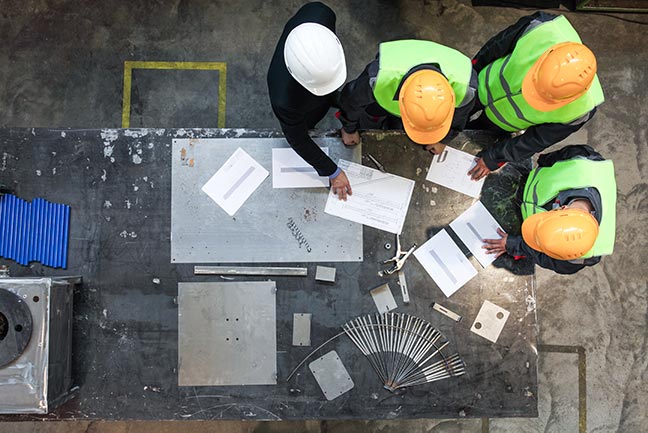
When purchasing a new property, it's not uncommon for an investor to want to improve it. If that property is part of a 1031 exchange, can those improvements be rolled into the exchange? If so, is a different type of exchange required? Are there any new exchange rules to be aware of when making improvements?
We’ll answer all these questions and more as we go over how to use improvements in a 1031 exchange.
What is an Improvement Exchange?
A 1031 exchange can be used for improvements on a replacement property. This particular exchange is called an improvement exchange. They are also called a build-to-suit or construction exchange.
An improvement exchange works by purchasing a replacement property and adding value to it through improvements. The replacement property plus the value-add should qualify as a like-kind exchange. The investor is buying something they want to improve to like-kind property, resulting in a replacement property of equal or greater value than the relinquished property.
Raw land can be used in an improvement exchange. In this case, the replacement property's value would be the raw land plus improvements to the land.
The investor doesn't close on the replacement property in an improvement exchange because that would end the exchange. Instead, they basically park the replacement property with an EAT (Exchange Accommodator Titleholder), who buys the replacement property. This is similar to a reverse exchange.
A 1031 assignment provision is included in the contract. This allows the EAT to take title to the replacement property. The EAT, an LLC, takes ownership of the property and holds the title for up to 180 days.
The same 45-day and 180-day deadlines apply to an improvement exchange. On the 45th day, the investor identifies a property they intend to buy and make improvements to.
The project doesn’t have to be completed to satisfy the exchange. Only what’s completed and constitutes real property will qualify for the exchange and thus tax-deferral treatment. Also, the investor can’t just buy materials and put them in a garage. Work must be done to the property.
There are a few conditions where the EAT will transfer the property back to the investor:
- At exchange completion
- When exchange proceeds are exhausted
- Completion of the 180-day timeline
Here’s an example of what an improvement exchange might look like:
Relinquished property: $1M
Replacement property: $500K
Real property improvements via draws from facilitator: $500K
As you can see, $500k + $500k equals the relinquished property's value, which is necessary for a like-kind exchange.
Advantages of an Improvement Exchange
A few advantages of an improvement exchange include the following:
- Buy the replacement property at a lower value compared to the relinquished property
- Utilize a tax-deferred exchange
- Use exchange funds rather than a loan to fund construction (i.e., proceeds from the relinquished property)
Improvements exchanges can be more costly. This is due to the additional cost of closing and the creation of the EAT. In some cases, smaller projects may not be worth the expense incurred from the exchange. An alternative would be to have the seller do the work and add it to the purchase price.
An improvement exchange has many similarities to a regular 1031 exchange. However, ensuring improvements qualify for the exchange and that an EAT is utilized means ensuring you have a reliable 1031 exchange facilitator to guide you through the process.
This material is for general information and educational purposes only. Information is based on data gathered from what we believe are reliable sources. It is not guaranteed as to accuracy, does not purport to be complete and is not intended to be used as a primary basis for investment decisions. It should also not be construed as advice meeting the particular investment needs of any investor.
Costs associated with a 1031 transaction may impact investor's returns and may outweigh the tax benefits. An unfavorable tax ruling may cancel deferral of capital gains and result in immediate tax liabilities.



